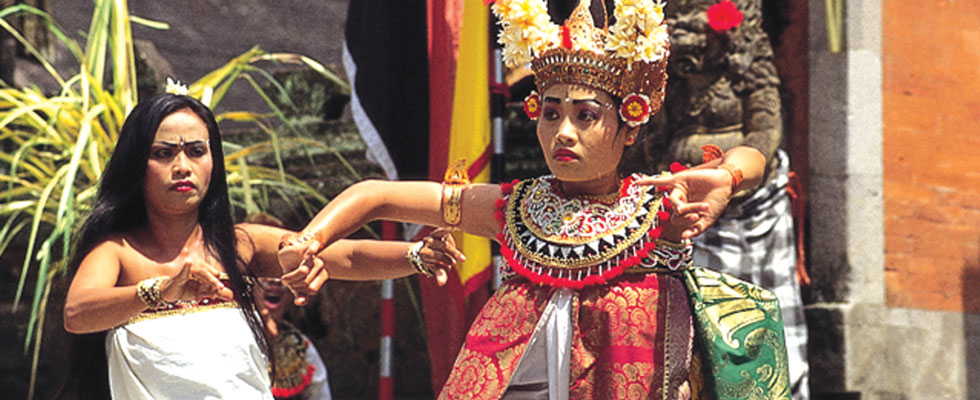
ASIA doesn’t get more Asian than Indonesia and the nation’s Java Island capital state of Jakarta is at its heart.
Travel with Dusty Miller
Take the Emirates daily flight to Dubai from Harare, then a smooth connection to one of the twice-daily flights to Jakarta from Dubai on the airline’s state-of-the-art fleet.
Discover Emirates comfortable inflight offerings, which include deeply reclining seats in Business Class and room to relax in Economy.
All classes feature ice, Emirates onboard information, communication and entertainment system offering hundreds of varied entertainment channels, making flights to Jakarta especially enjoyable.
Flights to Jakarta arrive at Soekarno-Hatta International Airport, known locally as Cengkareng, which is 20 kilometres northwest of central Jakarta. You will find abundant taxis, but may face a lengthy queue unless you booked at the airport arrivals counter.
Alternatively, passengers arriving from flights to Jakarta with a hotel booking can organise what is normally a complimentary hotel shuttle service to take them to their destination.
Passengers to Jakarta can enjoy a bustling Southeast Asian experience complete with chaotic traffic and almost obligatory street vendors. Visit Jakarta’s many museums, weave through gridlocked cars on a bright orange bajaj scooter, and discover the district’s five-cities-in-one.
- Chamisa under fire over US$120K donation
- Mavhunga puts DeMbare into Chibuku quarterfinals
- Pension funds bet on Cabora Bassa oilfields
- Councils defy govt fire tender directive
Keep Reading
Although Jakarta is the capital of Indonesia, it is in fact not a city but a district. Officially known as Daerah Khusus Ibukota Jakarta Raya or ‘Special Capital Territory of Jakarta’, the district (abbreviated to DKI Jakarta) is subdivided into five kota or ‘cities’, all of which have their own administrative systems.
The district was established in the fourth century and originally named Batavia. The de facto capital of the Dutch East Indies, it was renamed Jakarta, meaning ‘complete victory’, after Indonesian independence in 1945.
Today the district is a gateway for the numerous foreign visitors keen to explore Indonesia’s 13 000-strong island archipelago – including popular destinations such as Bali. The area is also favoured by neighbouring Malaysians and Singaporeans keen to pick up bargain textiles and crafts.
However, the district is more than a stopover or shopping centre, and once you dig beneath the chaotic, traffic-filled surface you’ll discover its unassailable spirit and energy, distinctive monuments and several good museums.
A sprawling conurbation, Jakarta is neither easy, nor practical to walk around. Pavements are congested with street vendors and, even if the traffic jams slow traffic to a snail’s pace, drivers won’t stop for pedestrians. The best way of getting from one place to another is in a bajaj; a three-wheeled scooter carrying passengers in an open cabin and capable of weaving though gridlock.
Start in central Jakarta, home to the district’s beloved and symbolic National Monument. Situated in Merdeka Square and known locally as Monas, you can visit the observation deck for a panoramic view of the five cities and Java Sea. North of Monas is the Presidential Palace, the official residence and office of the Indonesian president, while south is Jalan Thamrin, the city’s main avenue and the location of the Selamat Datang statue.
Here you’ll also find the cobblestone streets of Old Batavia which contain colonial era buildings that have been converted into museums. Visit the fascinating Jakarta History Museum, located in the former Batavia City Hall or the National Museum of Indonesia in the ‘Elephant Building’.
East Jakarta is also full of museums; the cultural park of Taman Mini Indonesia Indah alone has 14. The park also introduces the large roofs and pointed peaks of the country’s provincial architecture.
Jakarta is home to a kaleidoscope of tribes, languages, cultures, customs and religions; diversity which is mirrored in its cuisine. Ten million Jakartans enjoy a culinary stew which comprises multi-ethnic ingredients imported by centuries-old Indian, Arab, Chinese and European traders, and modern-day influences from other global cuisines.
For a true taste of Jakarta try Indonesian food which ranges from traditional Padang restaurants to low-budget Javanese Warteg food stalls. Try the ubiquitous satay, nasigoreng and gado-gado, or the local favourite: soto betawi, beef offal with coconut milk broth. Food is generally spicy so those with sensitive palates might want to request “Tidak Pedas” – without chilli.
Although Jakarta is capital of the world’s most populated Islamic country, it harbours a dedicated party scene and clubbing is arguably among the best in Southeast Asia. Pulsating nightclubs dot the five cities, while every modern high-rise hotel in the central business district has a sophisticated bar or three.
Popular areas include the expat pubs of Blok M, karaoke bars of Little Japan and arty haunts of Kemang in South Jakarta, and the bars around Menteng and Jalan Jaksa in Central Jakarta. The further north you go the seedier the bars become: Kota in North Jakarta is best avoided after dark due to its sleazy reputation.
In addition to Jakarta’s five cities, it includes the regency of Kepulauan Seribu. Translated as an exaggerated ‘Thousand Islands’, the regency is a collection of 105 small islands located on the Java Sea.
Easily accessible by ferry from Jakarta’s Ancol Marina, the archipelago of sandy islets – all but 37 of them uninhabited – provides a welcome respite from the frenetic pace of Jakartan life. The area has been designated a marine national park and offers superb diving amongst stunning coral reefs, plus windsurfing and jet skiing.
The daily Dubai-Lusaka-Harare service is operated by an A330-200 aircraft in a three-class configuration, offering 12 luxurious First Class seats, 42 seats in Business Class and generous space for 183 economy passengers. EK 713 departs Dubai at 0925hrs, arriving in Harare at 1720. The return flight leaves Harare at 1850hrs and lands in Dubai at 0640hrs the next day.
Fares from Harare to Jakarta start around US$1 300, including taxes. For visa information contact the Indonesian Embassy, 3 Duthie Avenue, Belgravia, Harare. Tel: 04-251799.
Book at your favourite travel agency or online at www.emirates.com.zw











